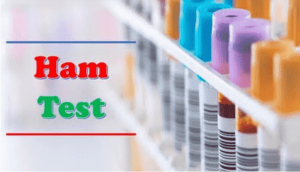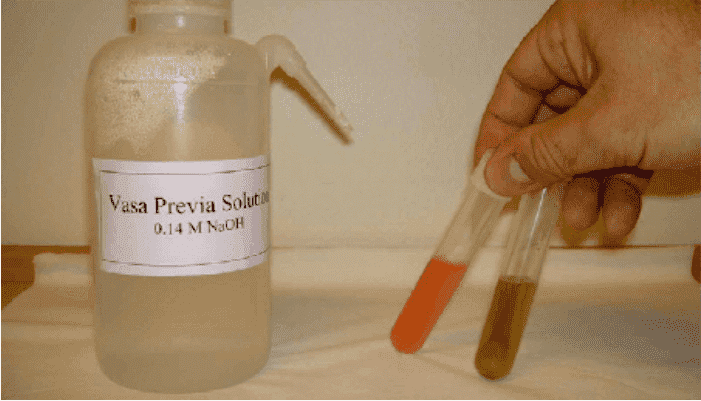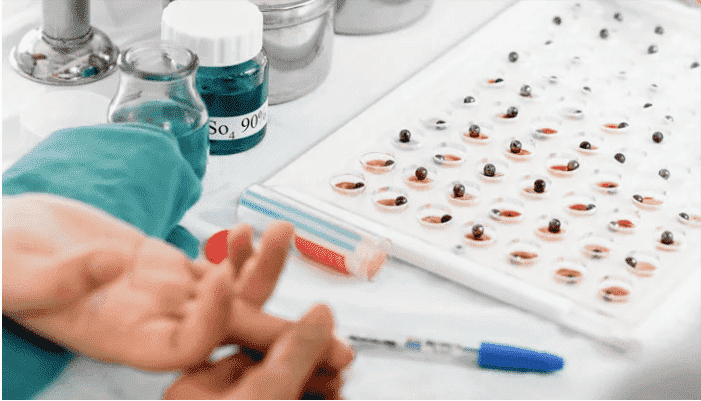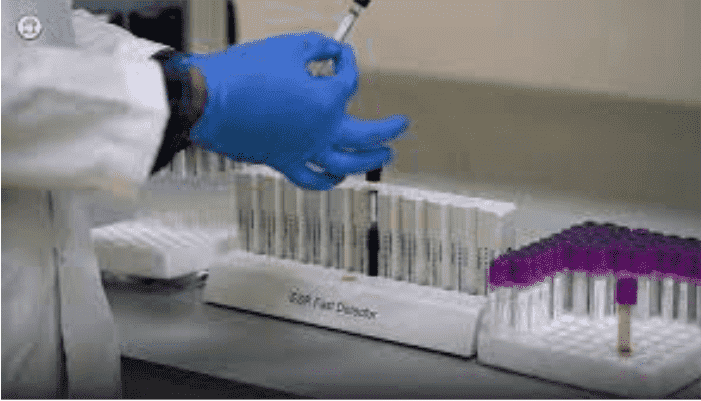Ham Test (Acid Serum Test): Diagnostic Guide for PNH & HEMPAS

Synonyms
Acid Serum Test, Acid Serum Test for PNH, Acidified Serum Test, Paroxysmal Nocturnal Hemoglobinuria Test, PNH Test, Serum Lysis
Specimen
Erythrocytes
Container
Lavender top (EDTA) tube
Reason to Reject Sample
- Incorrect tube
- Clotted specimen
- Hemolyzed sample
Reference Range
A positive test indicates red blood cell lysis in acidified serum using patient RBCs, but not with normal RBCs. Lysis may range from 5% to 80%.
Use
Used to diagnose Paroxysmal Nocturnal Hemoglobinuria (PNH) and Congenital Dyserythropoietic Anemia type II (HEMPAS), particularly in cases with:
- Hemolytic anemia
- Hemosiderinuria
- Pancytopenia
- Decreased RBC acetylcholinesterase
- Negative direct Coombs test
- Marrow failure
Note: Sensitivity may be reduced after transfusion.
Limitations
False positives may occur in:
- Spherocytosis (hereditary or acquired)
- Myeloproliferative disorders
- Leukemia
- Myelofibrosis
- Aplastic anemia
Hemolysis may also occur in acidified inactive serum under these conditions, making the test less reliable.
Contraindications
Recent transfusion can mask PNH RBCs and yield false-negative results.
Methodology
The Ham test measures complement-mediated lysis of red blood cells in acidified serum. Both the patient and control sera must be ABO compatible and fresh.
Alternative methods include:
- Adding cobra venom factor
- Heating serum
- Using bovine thrombin
However, none outperform the classic Ham test. False negatives are still possible when using patient serum.
Additional Information
- PNH RBCs show increased sensitivity to complement and lyse in acidified serum.
- Ham test and sucrose lysis test can detect this phenomenon in vitro.
- PNH cells:
- Type I: Normal sensitivity
- Type II: Moderate sensitivity
- Type III: High sensitivity (most clinically significant)
- Young reticulocytes are more sensitive than mature RBCs.
- Only CDA type II (HEMPAS) may also cause a positive Ham test. However:
- Only ~30% of normal sera lyse RBCs
- Patient’s own acidified serum is negative
- Sucrose lysis test is negative in HEMPAS
- In HEMPAS, an unusual RBC antigen interacts with a complement-fixing IgM antibody in some normal sera.
- Complement inactivation by heating at 56°C prevents lysis, confirming complement-dependence.
- Spherocytes may lyse in acidified serum due to low pH, even with inactivated serum.
Modern Diagnostic Methods
Flow cytometry with monoclonal antibodies can now detect granulocytes lacking complement-regulating proteins (e.g., DAF/CD55, MIRL/CD59) in PNH.
This method is more specific and correlates well with Ham test findings.
Pathophysiology
PNH is caused by a deficiency of complement-regulating proteins such as DAF (Decay-Accelerating Factor) and HRF (Homologous Restriction Factor) on the cell surface. This increases sensitivity to C3/C5b-9-mediated hemolysis.
References
- Desforges JF, “Paroxysmal Nocturnal Hemoglobinuria,” in: Hematology Basic Principles and Practice, Hoffman et al., Churchill Livingstone, 1991.
- Grenier KA, “Hemolytic Anemias,” in: Clinical Hematology and Fundamentals of Hemostasis, Harmening DM, FA Davis, 1992.
- Williams WJ et al., Hematology, 4th ed., McGraw-Hill Inc, 1990.
- Jacobs et al., “Laboratory Test Handbook,” Lexi-Comp Inc, 1994.


